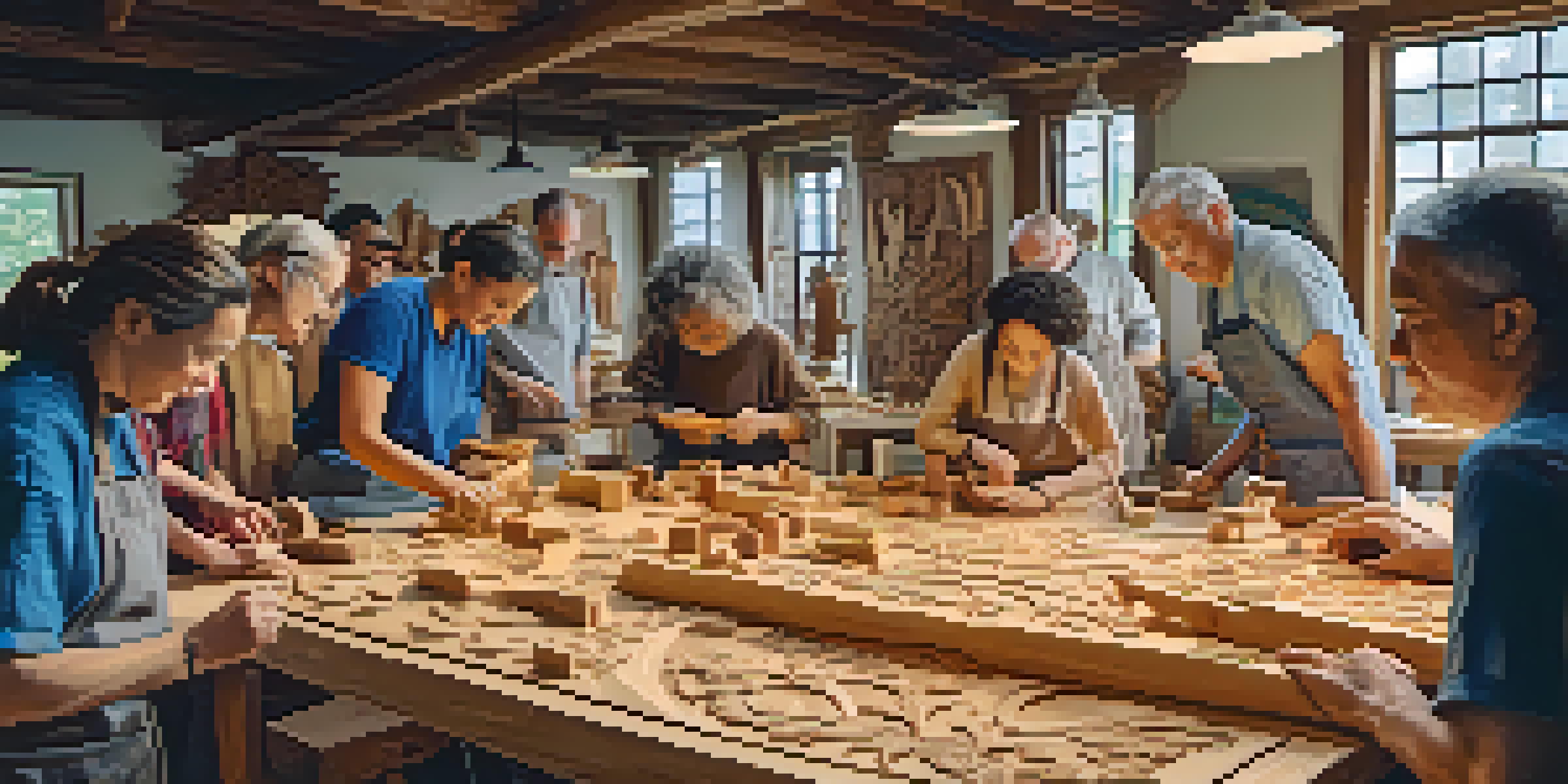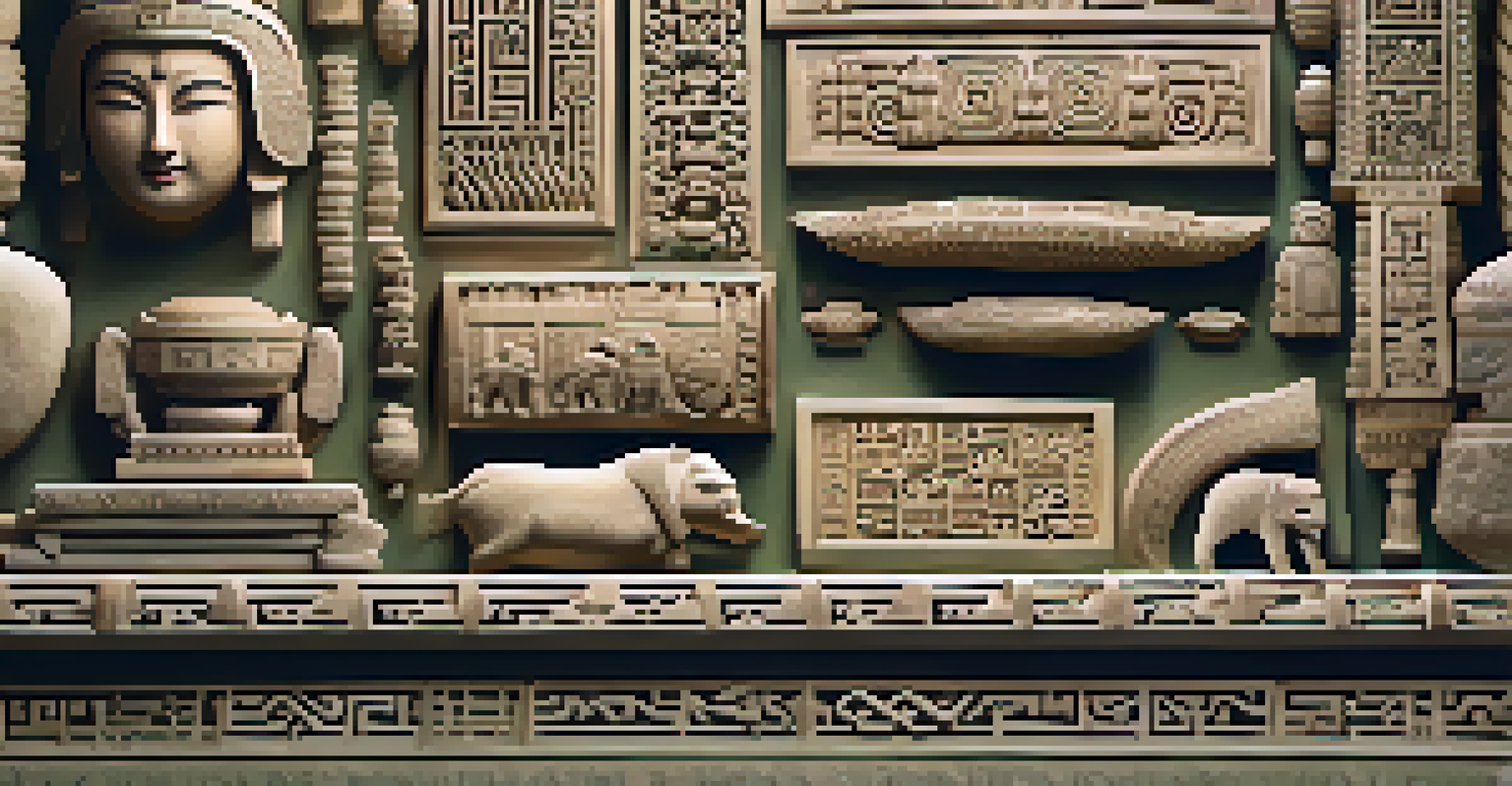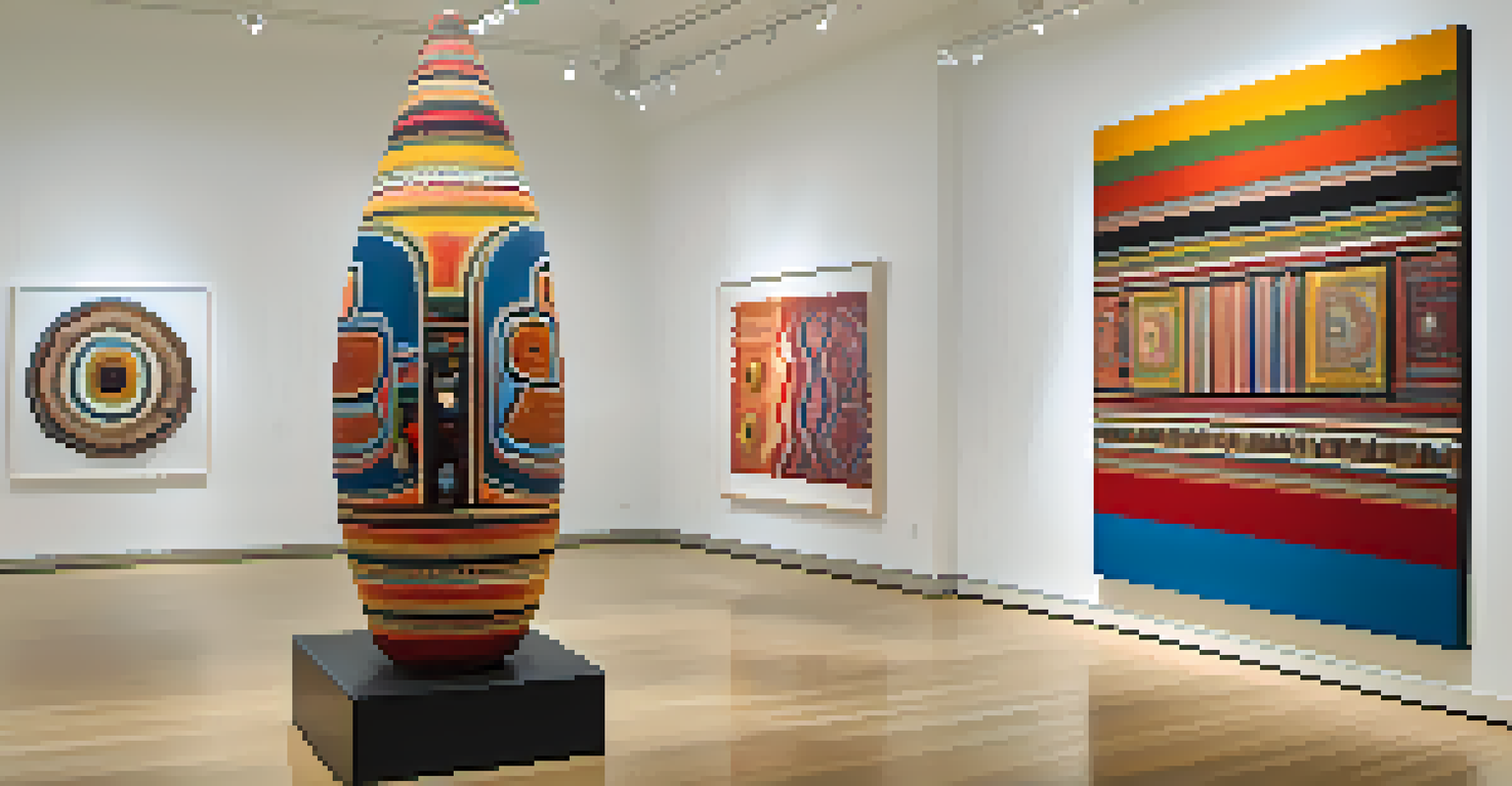Cultural Exchange Through Carving: A Historical Perspective

Understanding Cultural Exchange in Carving Practices
Cultural exchange refers to the sharing of ideas, traditions, and practices between different groups. In the world of carving, this exchange manifests in various styles and techniques that transcend geographical boundaries. For example, the intricate wood carvings of Africa have influenced modern artists worldwide, creating a beautiful tapestry of artistic expression.
Art is the most beautiful of all lies.
As artisans travel and interact with different cultures, they often adopt and adapt local carving techniques. This not only enriches their own work but also introduces new elements to the native styles, leading to a dynamic interplay of creativity. Think of it as a conversation where each participant learns and grows from the other, enhancing the art form as a whole.
Through the lens of carving, we can see how cultural exchange serves as a bridge that connects diverse communities. This connection fosters understanding and appreciation, allowing artisans to share their heritage while absorbing the influences of others. Ultimately, this exchange leads to a more enriched artistic landscape that celebrates diversity.
Ancient Carving Traditions and Their Influence
Carving has been a vital form of expression dating back to ancient civilizations. From the stone carvings of Mesopotamia to the intricate jade work in China, these cultures utilized carving to convey their beliefs and governance. Each piece tells a story, reflecting the values and social structures of its time, thus serving as a historical record.

As these civilizations interacted through trade and conquest, their carving techniques began to merge. For instance, the influence of Egyptian carving can be seen in the art of the Greeks, showcasing how styles evolved through cultural encounters. This blending of traditions not only enriched the art but also shaped the identities of the societies involved.
Cultural Exchange Enhances Carving
The sharing of diverse carving techniques enriches artistic expression and fosters understanding among different cultures.
The legacy of ancient carving is still evident today, as contemporary artists draw inspiration from these historical practices. By studying the techniques and themes of the past, modern carvers can create works that resonate with their cultural heritage while also appealing to a global audience. This timeless connection highlights the enduring power of carving as a form of cultural expression.
The Role of Trade in Carving Techniques
Trade routes have historically played a significant role in the dissemination of carving techniques. As merchants traveled between regions, they exchanged not only goods but also knowledge and artistic skills. This exchange often led to the incorporation of new materials and methods into local carving practices, enriching the craft.
Every piece of art is a contextualization of the culture in which it was created.
For example, the Silk Road facilitated the spread of intricate wood and ivory carvings between East and West. Artisans learned to blend local styles with those they encountered, creating unique hybrids that reflected the diversity of their influences. This melding of techniques showcases the adaptability and resilience of cultural practices amidst change.
Today, the legacy of these trade routes can still be seen in the global appreciation for different carving styles. Artists continue to explore and incorporate elements from various cultures, fostering a sense of unity and collaboration in the artistic community. Ultimately, trade remains a vital catalyst for cultural exchange in carving.
The Impact of Colonialism on Carving Traditions
Colonialism had a profound effect on traditional carving practices around the world. As colonizers imposed their own cultures and values, many indigenous carving styles were suppressed or altered. This often led to a loss of traditional techniques and themes that had been passed down through generations.
However, colonial encounters also sparked a new wave of creative expression as artists began to incorporate elements from both their heritage and the colonizers' styles. This blending resulted in unique forms of carving that reflected the complexities of identity in colonial contexts. It’s a fascinating example of resilience in the face of cultural upheaval.
Trade Routes Shaped Carving Styles
Historically, trade routes facilitated the exchange of carving methods and materials, leading to unique hybrid styles.
In the modern era, many artists are reclaiming their heritage and reviving traditional carving practices. By blending historical techniques with contemporary themes, they not only honor their ancestors but also create a dialogue about identity and cultural preservation. This resurgence highlights the importance of carving as a means of cultural expression and resilience.
Modern Carving: A Fusion of Traditions
In the contemporary art scene, carving has evolved to reflect a fusion of diverse cultural influences. Artists today often draw on a variety of historical techniques while infusing their personal style and modern themes. This blending creates a rich tapestry of artwork that resonates with both traditional and modern audiences.
For instance, many carvers now incorporate elements from various cultural backgrounds, transforming their work into a celebration of diversity. This can be seen in sculptures that combine indigenous patterns with contemporary forms, creating pieces that speak to a broader narrative. It's a beautiful reminder that art can be a universal language.
Moreover, modern technology has opened new avenues for carving, allowing artists to experiment with materials and techniques previously unavailable. This innovation fosters even more cultural exchange as artists share their discoveries and collaborate on projects that transcend borders. In this way, carving continues to be a vibrant and evolving expression of cultural identity.
Community Engagement Through Carving Workshops
Carving workshops have become a popular way to engage communities in cultural exchange. These hands-on experiences allow participants to learn traditional carving techniques while also sharing their own stories and backgrounds. It's a beautiful way to foster connections and build understanding among diverse groups.
During these workshops, participants often collaborate on projects that blend various styles and influences. This collaborative spirit not only enhances the final artwork but also creates a sense of camaraderie among participants. Think of it as a melting pot of creativity where everyone contributes their unique flavor to the mix.
Modern Carving Celebrates Diversity
Contemporary artists blend traditional techniques with modern themes, creating works that resonate across cultural boundaries.
Furthermore, these workshops often emphasize the importance of preserving traditional carving practices. By teaching younger generations the skills and stories behind the art, communities can ensure that their cultural heritage continues to thrive. Ultimately, these engagements highlight the role of carving as a unifying force in cultural exchange.
The Future of Cultural Exchange in Carving
As we look to the future, the potential for cultural exchange through carving remains vast. With globalization and digital connectivity, artists now have unprecedented access to techniques and ideas from around the world. This interconnectedness opens up new avenues for collaboration and innovation in carving practices.
Moreover, the growing appreciation for diverse art forms encourages artists to explore and incorporate different cultural elements into their work. This trend not only enriches their artistic expression but also fosters respect for the traditions and histories of various communities. It's a promising sign that cultural exchange through carving will continue to flourish.

In this evolving landscape, the role of carving as a medium for storytelling and connection becomes even more crucial. As artists share their unique perspectives and experiences, they contribute to a larger narrative that celebrates the beauty of diversity. The future of carving, therefore, is not just about individual expression but also about collective cultural enrichment.